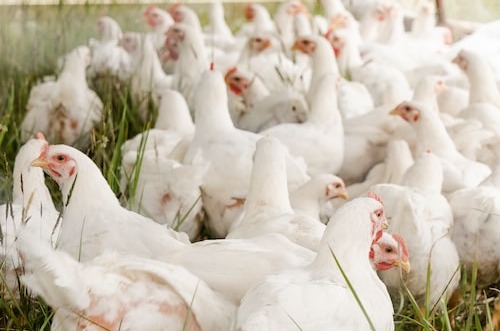W21: Chicken Update

In W21 in the chicken landscape, SECEX reports that until W3 of May 2023, Brazilian chicken meat exports totaled 275.92MMT, valued at USD 542.113M, 69.08% of volume and 64.89% of value registered in May 2022. In the first 14 working days of May 2023, Brazilian revenue by daily average was USD 38.722M, up 2.0% YoY but a decrease of 8.44% WoW. The tons per daily average were 19.709MMT, an increase of 8.6% YoY but down 7.99% WoW. The price paid per ton amounted to USD 1.965M, down 6.1% YoY but only a slight decrease of 0.48% WoW. Experts indicate that Brazil continues to sell large chicken volumes, but the average price of chicken meat is falling, coinciding with the devaluation of the Chinese Yuan. Traditionally, when the Chinese currency starts to devalue, Chinese importers start to renegotiate import contracts more eagerly. SECEX/ME data indicate that in the first four months of 2023, Brazilian chicken meat exports to China increased by 33.5% in volume and rose by 55% in value, more than 15% of the total volume and almost 20% of the USD 3.3B registered in the period due to the appreciation of the product. Other major destinations for Brazilian chicken shipments in the January-April period were Japan, South Africa, the UAE, Saudi Arabia, and the Philippines.
After five months of lower results, in April 2023, the Brazilian chicken cut average price was again higher than that of a whole chicken. This is due to two opposing movements; a 3% increase in cuts and a drop in the price of a whole chicken. On average over the last 10 years, chicken cuts operated with an average margin of 11%, reaching peaks of 34%. But between November 2022 and March 2023, the average value recorded was 3% below that achieved by the whole chicken, with a negative peak in February of 7.5%. A year ago, around this same time, prices for cuts and whole chicken practically matched. However, while the cuts continued to rise and reached the highest value in July 2022 in more than a decade, the whole chicken momentarily began to drop in price, a situation reversed three months later. It was when, in the opposite direction to the cuts, whole chicken started to register highs that allowed it, for five months, to surpass the value reached by the cuts. The Brazilian Ministry of Agriculture and Livestock (MAPA) declared on May 22nd a state of a zoosanitary emergency across the country with the aim of reinforcing measures to prevent avian flu from reaching commercial farms and poultry production. So far, the highly pathogenic avian influenza virus (H5N1) has been detected in seven wild birds in Espírito Santo and one in Rio de Janeiro.
In Bavaria in Germany, there was a suspected outbreak of avian influenza in the district of Regensburg. KBLV announced that 60K chickens from one farm were killed as a preventive measure. Furthermore, it was recommended that the necessary animal health measures be introduced, such as the establishment of a protection and surveillance zone. In Johor in Malaysia, the growth of chicken is slow and the supply of broilers may decrease by 20% due to the hot weather being experienced. The Malaysian chicken industry is worried that unfavorable weather may cause chickens to die. According to Liu Jialong, general manager of the Johor Small and Medium-sized Poultry and Livestock Association, there are 500 chicken farms in Johor, 400 of which still use traditional open chicken houses, and thus are vulnerable to weather. South Africa faces a potential chicken supply crisis as Brazil, South African major source of chicken, detects avian influenza in wild birds, risking job losses, price hikes, and supply shortages. According to guidelines from the World Organization for Animal Health (WOAH), poultry exports from Brazil will not be banned unless the virus spreads to commercial flocks. However, due to the highly contagious nature of highly pathogenic avian influenza (HPAI), which has caused the worst global outbreak of bird flu on record, South Africa must prepare for the worst-case scenario. Lastly, in Indonesia, the National Food Agency indicates that the current increase in the price of chicken meat is still reasonable. However, Indonesian market traders asked that this price increase must be addressed immediately because it has been going on for more than a month. Indonesian farmers also admit that the high price of corn for feed has made the price of chicken meat soar.





